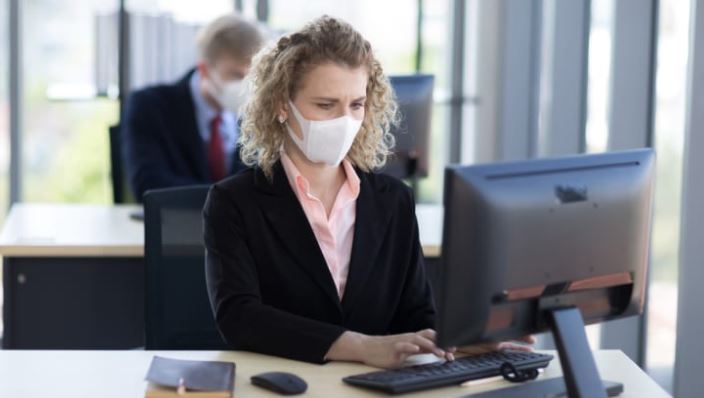As the COVID-19 crisis continues, the U.S. Department of Labor (DOL) has issued more guidance for workers and employers about their rights and responsibilities under federal leave and wage and hour laws.
On July 20, the DOL added new questions and answers to pandemic-related issues under the Fair Labor Standards Act (FLSA), the Family and Medical Leave Act (FMLA) and the Families First Coronavirus Response Act (FFCRA). They include:
- Do employers have to pay employees for unauthorized telework hours? The department said, in accordance with the FLSA, employers must pay employees for all hours of telework actually performed, including overtime work, if the employer knew or had reason to believe the work was performed. “This is true even of hours of telework that you did not authorize,” the DOL said.
- Is hazard pay required for employees working through a pandemic? Not under federal wage and hour laws. Additional pay is “usually determined privately between employers and employees or their authorized representatives.”
- Will telemedicine visits count as in-person visits to establish a serious health condition under the FMLA? Yes. Through Dec. 31, the DOL will consider telemedicine visits to be in-person visits if the visit includes an examination, evaluation or treatment by a health care provider; is performed by videoconference; and is permitted and accepted by state licensing authorities. Electronic signatures also will be accepted to establish a serious health condition under the FMLA.
To help provide further context on these interrelated laws, we’ve rounded up DOL resources and recent articles from SHRM Online on the FFCRA and more.
DOL Resources on COVID-19 and the Workplace
The Labor Department provides a number of resources to help employers and workers navigate tricky wage and hour and leave issues during the pandemic. Resources include a fact sheet for employees, a fact sheet for employers, and a set of questions and answers about paid sick leave and expanded family and medical leave under the FFCRA. The DOL also issued two posters—one for federal workers and one for all other employees—that satisfy employers’ FFCRA notice requirements. Employers can review questions and answers about posting requirements and quick benefits tips to help determine how much FFCRA paid leave is available to workers.
Lawmakers enacted the FFCRA to help businesses and workers during the coronavirus pandemic. Private employers with fewer than 500 employees are eligible for tax credits to cover the cost of providing employees with paid leave taken for specified coronavirus-related reasons. “The legislation will ensure that workers are not forced to choose between their paychecks and the public health measures needed to combat the virus, while at the same time reimbursing businesses,” the DOL said
Qualifying for Emergency Paid Leave
Under the FFCRA, many employers will have to provide up to 80 hours of paid-sick-leave benefits if an employee:
- Has been ordered by the government to quarantine or isolate because of COVID-19.
- Has been advised by a health care provider to self-quarantine because of COVID-19.
- Has symptoms of COVID-19 and is seeking a medical diagnosis.
- Is caring for someone who is subject to a government quarantine or isolation order or has been advised by a health care provider to quarantine or self-isolate.
- Needs to care for a son or daughter whose school or child care service is closed due to COVID-19 precautions.
- Is experiencing substantially similar conditions as specified by the secretary of health and human services, in consultation with the secretaries of labor and treasury.
Paid sick leave must be paid at the employee’s regular rate of pay, or minimum wage, whichever is greater, for leave taken for reasons 1-3 above. Employees taking leave for reasons 4-6 may be compensated at two-thirds their regular rate of pay, or minimum wage, whichever is greater. An additional 10 weeks of partially paid, emergency FMLA leave may also be available for child care purposes.
Fear of Coronavirus Isn’t Covered by FFCRA
Workers who remove their children from day care solely out of fear of the pandemic and employees who self-quarantine because they are afraid of catching the coronavirus aren’t covered by the FFCRA. But FFCRA coverage may apply if a local quarantine order precludes a child from using a child care facility or a health care provider has advised that a child be quarantined because of concerns of potential infection or transmission of the virus, said Ronald Schirtzer, an attorney with Weinberg Wheeler Hudgins Gunn & Dial in Miami and Orlando, Fla.
Guidance on FFCRA Leave Due to Summer Camp Closures
The DOL also provided guidance for its Wage and Hour Division investigators on when employees may be eligible to take FFCRA paid family leave if they are unable to work because they are caring for a child whose summer camp or other summertime place of care is closed.
